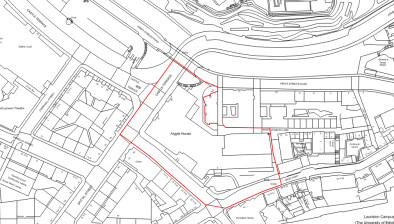Blog: Architect Malcolm Fraser on the end of his practice

Architect Malcolm Fraser reflects on the experience of having to close his practice despite producing buildings feted by colleagues and politicians.
My name is Malcolm Fraser and I’m a recovering businessman. I’m an architect and ran a successful practice for 22 years that was lauded with awards and made buildings that people loved and were economic successes. We had good clients that wanted us and what we did was beautiful and important, but it was not profitable and the business creased trading in August, going into voluntary liquidation.
There is, then, the bleakest of humour in launching my career as a Rattle columnist in response to my editor’s request to write about “what Scotland needs to do to nurture and sustain talent”. We are familiar with such advice from the successful businessman; but here’s some from a different place.
First, I should be clear that no blame accrues to my former clients. We had beautiful work on our computers, for clients who appreciated us, and it breaks my heart to have lost those relationships, as well as my work colleagues. But all our work was tricky, challenging and high-profile, of the sort that some might see as “loss-leaders”, so we had to compete on fee levels with that perception. And, despite strenuous efforts, we never managed to land the sort of larger projects whose fees would underpin our smaller, high-profile ones.
Winning those challenging, high-profile and mid-sized public projects was also a terrifying, byzantine process. Huge efforts were poured into extraordinarily-complex official “procurement” processes, that had us write endless screeds about technical and procedural irrelevancies while never approaching the simple question of “are we any good at making good buildings?”
So, while our record on such simplicities was exemplary – all our significant projects still flourish and we never, in our 22 years, made an insurance claim – our business model was very marginal: challenging, mid-sized, procurement-heavy projects in a very competitive fee climate.
My direct competitors feel the same pressures and it is a huge problem that the innovative, craft-based end of an industry that is so critical to the nation’s health, wealth and happiness, is so insecure. Further, the box-tick nature of these procurement processes militates against the emergence of new practices, without long lists of projects they have already completed, so we are in the unhappy, infertile position of having produced no major new architectural practices this century.
It’s easy to blame this on architecture’s procurement processes but I’d like to look behind them, to understand a wider malaise that affects all our endeavours, not just our architectural ones. The core problem is a British one, that, in the second half of the last century, we lost the joy in making things and then, from the late 1970s, turned decisively away from a culture of making and substituted a service one. The primary business of modern Britain is the slew of financing and financial instruments, deals and legal structures, asset-trading and bundling, marketing and spin-doctoring that underpins our neo-liberal economy; and that if we might label that Thatcherite, then what New Labour added to it was a maze of consultation and micro-regulation (for after deregulating the big, important things, it’s a simple displacement-activity to over-regulate the small).
In the building industry, The Private Finance Initiative that the Conservatives invented and New Labour went gaga for, is a prime exemplar. Schools, Hospitals and other buildings supplied through vast, complex and extremely expensive private finance whose only virtue was ideological awe for the wisdom of bankers over the public interest, and where the simplicities of delivering healthy buildings full of light, air and connectivity appear nowhere and are, at best, incidental to the process.
We sometimes fondly imagine that we do things differently in Scotland, and the Government has put in place a non-profit version of Private Finance, which works through the Scottish Futures Trust and awarding large public “Hub” contracts, on locked-in monopolistic deals, to large (and usually English-headquartered) contractors. Such upscaling bypasses local firms and, again, substitutes process for craft – with architects’ services being described as a “supply chain component” where, presumably, the cheapest and most basic service, rather than the most caring and beautiful, is required, producing the most basic school or hospital.
It seems to me that most of what has gone awry in our new Scotland has been through “upscaling”: our single police force, for instance, and the closing-down of local courts with justice withdrawn to the cities. The initiatives that hold the most promise are those that spread-out ownership and decision-making, such as through the Community Empowerment Bill, The Land Reform Group and new initiatives in Housing.
A national focus on “downscaling” – on subsidiarity, as devolving responsibility and decision-making down to its most local level – would probably also start with a revived local democracy. Scotland has the most disconnection between an ordinary voter and their political representatives of any European democracy, and badly needs reinvigorated community or parish councils to care for us locally – as well as larger Local Authorities, with cities reconnected to their hinterlands under areas similar to the Health Board ones.
So my proposal for creating a climate for the nurturing and retention of talent in Scotland is big and ambitious, involving critical national renewal: a culture that recovers joy in the craft of making things, and rewards the skills that requires; and that avoids creating big, dumb structures when, instead, it should be devolving down power and decision making, trusting its people and communities.
This article first appeared in the Rattle.














